A flashlight is a handy tool to have, er, on hand. You can use it to see your way out in the backwoods. It can keep you out of the dark during a power outage. And you can use it to help you find your child’s small toy under the bed, couch, or maybe even behind the dryer. Obviously, you’ve got to have at least one stored around the house. But if you think buying a flashlight is a simple thing, you’re about to be enlightened. A lot of factors need to be considered when choosing the right light for you. If you don’t have the time to learn them all, we’re shining a spotlight on the 10 best handheld flashlights in the market today so go ahead and pick what suits you best.
Top 10 Handheld Flashlights Of 2020 Reviewed
1. Streamlight 88031 ProTac 2L
 Best Flashlight With Strobe
Best Flashlight With Strobe
This tactical flashlight from Streamlight is definitely more expensive than our first pick. However, it has several features that make it worth the extra cost. First, this runs on two 3-volt CR123A lithium batteries which provide better performance than a single AA battery as well as a longer battery life. Plus, the batteries are already included. Second, this unit comes with three modes – high, low, and strobe. Runtime varies depending on the mode – high has 3 hours, low has 50 hours, and strobe has 6 hours.
What we love about this flashlight is that you can select between different programs that will suit your lifestyle/application best – high/strobe/low, high only, or low/high only. At the highest setting, you get 260 lumens with a beam distance of 150 meters. The Streamlight ProTac 2L also stands out because of its durability.
The unit is made of anodized aluminum with an impact-resistant tempered glass lens and an IPX7 rating. It has an impact resistance rating of 2 meters and an anti-roll head. However, the pocket clip doesn’t seem to secure the light well enough in your pocket which might cause you to lose it. The batteries, CR123A, are not readily available so you need to make sure you’ve got some stocked away. Also, this flashlight can get hot when left open for quite a long while.
Pros:
- Programmable Modes
- High impact resistance
- Water resistant
Cons:
- Batteries are not readily available everywhere
- The pocket clip is poorly made
- Can get hot
2. Anker Bolder LC90 LED Flashlight
 Best Flashlight For Self-Defense
Best Flashlight For Self-Defense
The Anker Bolder LC90 LED Flashlight is a Cree LED flashlight that has a maximum light output of 900 lumens, a beam distance of 1000 feet, and adjustable beam, and 5 modes. The modes are high, medium, low, strobe, and SOS. At medium beam, you can leave this light on for as long as 6 hours before the light starts to dim.
The flashlight is powered by a rechargeable 3350mAh battery that can recharge in just 6 hours. It comes with a Micro USB cable but you can also use a 1A adapter (not included). This unit is IP65-rated water resistant and its aluminum body is shock-resistant. The flashlight is sold with a welcome guide, a wrist strap, and a worry-free 18-month warranty. This tactical flashlight features a scalloped-bezel and an extra-long handle which enables you to use this as a weapon.
However, switching between modes isn’t easy. You need to press the button twice to change from one mode to the next. That’s a lot of clicking. Also, the finish isn’t very “grippy” so may find it slipping through your fingers especially if your hand is wet.
Pros:
- Very bright light
- Scalloped-bezel for striking
- Excellent customer service
Cons:
- Switching modes can be a pain
- Feels a bit slippery
3. Maglite LED 3-Cell D Flashlight
 Best Flashlight For Home
Best Flashlight For Home
The MagLite LED 3-Cell D Flashlight proves that superior craftsmanship doesn’t mean expensive. This utility flashlight comes with a lifetime warranty so you know it is definitely built to last. It features weather-resistant seals, a diamond knurl design, and an aluminum body. It has a light output of 168 lumens, an 80-hour run time, an IPX4 rating, a 1-meter impact resistance rating, and a 412-meter beam distance.
And that’s not all. This unit comes with an adjustable beam; twisting the head of the flashlight will let you switch between spot and flood beam focusing. Take note that this is not something you can carry in your pocket because it is a little over a foot long. It’s also pretty heavy which can be good or bad; it’s heavy enough to use as a weapon but not light enough to be an EDC flashlight. Maybe stored in the car? Also, you’ll notice a big dark spot in the middle of the flood beam.
Pros:
- Solid construction
- Very bright
- Lifetime warranty
Cons:
- The big dark spot in the middle of the flood beam
- A little heavy
- Not for pocket carry
4. J5 Tactical V1-PRO Flashlight
 Best Flashlight for the Money
Best Flashlight for the Money
The J5 Tactical V1-PRO Flashlight is our number one pick because it’s very affordable, ultra bright, and incredibly durable. This tactical flashlight has a maximum light output of 300 lumens with three different modes to choose from: high, low, and strobe. You can use a single AA battery or a 14500 Rechargeable (not included) to power this light for more than one hour at its highest setting.
It has a beam distance of 600 feet and an adjustable beam type, easily switching from a flood beam to a spotlight one. Made from aluminum alloy, this light is water resistant and can survive a 9-foot drop. However, it does run hot if kept on for a long time. The instructions are in Chinese which means you’ll need to read reviews to figure out how to “reprogram” the sequence of the modes (so you can start with the bright mode right off the bat). More importantly, you’ll need a 14500 Rechargeable to reach the maximum light output which costs extra.
Pros:
- Very affordable
- Three easy-to-use modes
- Water resistant and impact resistant
Cons:
- Can get hot over time
- Instructions are in Chinese
- Battery not included
5. Streamlight 66122 Stylus Pro Penlight
 Best Flashlight For EDC
Best Flashlight For EDC
For a simple EDC, the Streamlight 66122 Stylus Pro Penlight checks of all our boxes. You can choose between getting one powered by 2 AAA batteries or a USB rechargeable one. It has a light output of 90 lumens, a run time of 6 1/2 hours, and a beam distance of 58 meters. Pretty decent for something so thin and light. You can use the push button tail switch to temporarily open the light or turn it on continuously. We love the fact that this small light is constructed out of Type II MIL-SPEC abrasion and corrosion-resistant anodized aircraft aluminum and features a non-slip rubberized comfort grip which means it won’t be slipping off your hand even when it’s wet.
The flashlight has an IPX4 rating and is 1-meter impact resistant tested. It comes with a removable pocket clip if you want to ensure it stays in place. All that for less than $20. The main drawback to using this flashlight is the switch. It can be difficult to get it to click. Also, for some, it can be too bright up close. Lastly, the removable pocket clip is a bit tight.
Pros:
- Very bright for a penlight
- Anodized aircraft aluminum construction
- Comes in several versions (different batteries)
Cons:
- Hard to push the button to click
- Some found it too bright up close
- The removable pocket clip is too tight
6. Stanley Fatmax SL 10
 Best Emergency Flashlight For Car
Best Emergency Flashlight For Car
If you’re looking for an emergency handheld flashlight, nothing gets better than the Stanley Fatmax SL 10. This trigger-style flashlight provides you with an ultra bright light with an output of 2200 lumens at high and 920 lumens at low. Pressing the trigger will allow you to go from high to low to off. The flashlight also features a collapsible stand on top which allows you to use it hands-free when necessary.
The flashlight comes with two types of chargers, one for your car and another is the typical AC adapter for the home. There’s even a red lens that you can use to dim the light even further. However, this light isn’t waterproof. It can withstand light rain but possibly not a deluge. And you can’t immerse it in water, even accidentally. Also, the flashlight doesn’t hold a charge long – maybe over 1 hour at the highest setting, 3 hours at the dim setting.
Pros:
- 2200 lumens
- Collapsible stand for hands-free mode
- Comes with two types of chargers
Cons:
- Not water resistant
- Doesn’t hold a charge long
7.Tactical Flashlight, OxyLED Super Bright 900 Lumens CREE T6 LED Torch
 Best LED Tactical Flashlight
Best LED Tactical Flashlight
The OxyLED Super Bright is a tactical flashlight featuring an ultra-clear glass lens, aircraft alloy, and anti-abrasive coating. It is the perfect flashlight for use for tasks such as hiking, hunting, camping, military, fishing, and home emergencies. The flashlight comes with five light modes including the SOS, strobe, low, medium, and high. No matter the light mode you choose, you can easily zoom in or out to widen or narrow the beam. This is the reason, this light is perfect for use in different scenarios.
Don’t judge the flashlight by its narrow body, which can be deceiving. You would be surprised to learn that the flashlight is strong, tough, and durable, thanks to the aircraft-grade alloy and a tempered, ultra-clear glass lens. It comes with a 18650 lithium-ion battery, which is rechargeable in a span of fewer than 4 hours. When in high-beam mode, the battery will last for 6 hours and 9 hours in medium-beam mode. If you opt for the low-beam option, you can use the torch for up to 12 hours before you recharge it.
Pros:
- A tough, durable flashlight
- Comes with 5 different modes
- The lithium-ion battery lasts for a long time
Cons:
- Doesn’t have a memory to preserve the selected mode
- The light warms up after some time
- There isn’t an overcharge circuit to protect the battery
8. SureFire G2X Series
 Best Police Flashlight
Best Police Flashlight
The SureFire G2X Series offers several styles for you to choose from – pro, tactical, combat-light, and law enforcement. All these flashlights feature tough Nitrolon polymer bodies and are powered by 2 SureFire 123A Lithium batteries that have built-in heat and fault protection as well as a wide temperature tolerance. The Pro features two light modes – 320 lumens max and a low mode with 15 lumens.
The Tactical only has one mode – a penetrating 320-lumen beam while the Law Enforcement model has a 400-lumen rating on high mode and 15 lumens for low mode. All SureFire G2X flashlights are weatherproof. The tail cap switch allows you to partially depress the button for momentary-on, clicking it for constant-on. The flashlights are small enough to fit well in the palm of your hand.
And the body is sculpted to provide you with a comfortable but secure grip. However, some reviewers have reported poor customer service which really detracts from the brightness of the light. Also, it requires specialty batteries (CR123). Plus, the flashlights are more expensive than a lot of others on our list.
Pros:
- Comes in several styles
- Weatherproof
- Has momentary-on option
Cons:
- Poor customer service
- Expensive
- Requires specialty batteries
9. Energizer Weather Ready Rechargeable LED Light
 Best Rechargeable LED Flashlight
Best Rechargeable LED Flashlight
Cheap but reliable. Two words that best describe this rechargeable LED light from Energizer. This is perfect for providing you with light during short power outages with its run time of 3.5 hours. The flashlight comes with a built-in AAA NiMH battery and a retractable sliding plug system. No need to look for a charger because you can plug this in straight into an outlet.
The beam distance is 30 meters and the light output is 25 lumens, just right for illuminating your way around the house when the lights go out. The flashlight also features a red LED indicator light to let you know when it’s charging; it does take quite a long while to charge – a full 12 hours.
And if the power does go out, this flashlight will automatically turn on (if left in the “on” position while plugged in) so you can easily find it in the dark. Any drawbacks? Not really, especially at this price. We’d have loved a lanyard or strap attached so you can use this as lantern should you need to. Or at least a flat bottom so you can stand it on a table.
Pros:
- Automatically turns on when the power goes out
- Built-in, retractable plug
- Can leave it plugged in, will not “overcharge”
Cons:
- No lanyard or wrist strap
- Rounded bottom; won’t stand up
10. Maglite Mini PRO
 Best Flashlight Without Modes
Best Flashlight Without Modes
If you just want a basic flashlight with none of the special modes, click buttons, etc., then the Mini Maglite Pro may be what you’re looking for. This is a no-frills flashlight with only one mode, a 272-lumen rating, a 163-meter beam distance, and a 2.5 hour run time. The unit is powered by 2 AA batteries.
And you can even adjust the beam from wide to narrow. This flashlight is solidly constructed and isn’t going to break down on you anytime soon. Some individuals may not like the fact that you’ll need two hands to open the flashlight since you need to twist the end/tail. Also, we noticed that it gets hot fast.
Pros:
- Budget-friendly
- No-frills bright light
- Adjustable Beam
Cons:
- Requires two hands to turn on/off
- Gets hot fast
How to Choose the Best Handheld Flashlight: The Ultimate Buying Guide
Fumbling around in the dark is never fun… well, almost (wink, wink). But seriously, no one would not want to be able to see where they’re going or what they’re looking for when the lights go out. Which brings us to the topic of handheld flashlights. One wouldn’t have thought buying one would be too complicated. After all, how complicated could a flashlight be? Well, it depends.
On a lot of factors, in fact, such as size, brightness, bulb type, durability, and modes. The right flashlight for you isn’t going to be the same as the next guy’s or gal’s. Lifestyle and preferences will also play a role in determining how to brighten your suddenly dark world. So many factors to consider, lots of options to look over. How do you figure out which one’s right for you? Well, our handy guide below should provide you with enlightenment.
Types of Flashlights
Utility: also known as EDC or everyday carry flashlights, these are the most common type. These general-purpose flashlights are usually used in homes, feel lightweight in your hand, and are inexpensive. They also don’t last more than a few years and tend to emit only a modest amount of light.
Industrial: these are the heavy duty flashlights that won’t fit in your pocket. Typically large and heavy, these flashlights emit a significant amount of light, more than you’d get with a utility flashlight. Most industrial models are priced from modest to fairly expensive.
Rechargeable: these are flashlights that have a built-in battery that can be recharged via USB or using an AC/DC adapter. Most rechargeable flashlights will last more than 3 hours on high, even the cheap ones like the Energizer Weather Ready Rechargeable LED Light.
Tactical: originally designed for military use, these flashlights are typically palm-sized, rugged, and provide very powerful, focused beams that can temporarily blind an attacker. These are also designed to be used as a self-defense weapon, built with heavy material and sometimes featuring toothed rims like the Anker Bolder LC90 LED Flashlight. Due to their power and material, these flashlights are usually expensive.
Emergency: these are hand-cranked or solar-powered flashlights which allows them to provide light in areas struck by natural disasters.
What are the Specs That I Need to Look at?
Light Output
The light output of a flashlight is measured in lumens. Take note that this measurement is only for the brightness of a light based on certain factors – highest brightness setting using new batteries. In short, lumens will not show you the whole story about the brightness of a flashlight because beam distance, intensity, and type will also need to be factored in.
For general tasks around the house or walking your dog at night, you can choose a flashlight with a lumen rating ranging from 20 to 150 like what you get with the Streamlight 66122 Stylus Pro Penlight. For camping, hiking, and personal security, you should choose flashlights with 160 to 200 lumens. For tactical application or activities such as hunting, rock-climbing, flashlights with 200 to 500 lumens should be good enough. For example, the Streamlight 88031 ProTac 2L has a light output of 350 lumens. Industrial flashlights can range from 600 to 1000 lumens. Anything over 1000 lumens are for use in critical tasks that require full situational awareness such as search & rescue.
Beam Distance
This is measured in meters and tells you how far the light will shine until the point where its brightness has started to dim – the light is only as bright as a full moon. Take note that beam distance will vary depending on the brightness setting you’re using.
Run Time
This lets you know how long before the flashlight’s output drops to 10% of its given light output using new batteries. Take note that your flashlight’s output can decrease gradually over time. It may also remain constant over a long period of time and then suddenly decrease.
Water Resistance
With flashlights, water resistance is measured using the IPX system. An IPX4 rating means that the flashlight is splash resistant from all angles. An IPX7 rating, on the other hand, means that you can immerse the flashlight in water with a depth of 1m for up to 30 minutes. For complete submersion, you’ll need a flashlight with an IPX8 rating which means that it can be submerged up to 4 hours at a specified depth.
What are the Features and Functions Found in a Flashlight?
Materials
Most flashlights are constructed out of plastic or aluminum alloy. Plastic flashlights are typically lightweight and do not have the same durability of aluminum flashlights, except for those that are constructed of high-grade plastic. Aluminum flashlights are more durable and usually feel heavier in the hand.
However, not all aluminum flashlights are the same. Some are made with thinner aluminum while others have thicker bodies which make them tougher. Some models will have stainless steel heads to increase the flashlight’s impact resistance (how far they can be dropped and still remain functional).
Bulb Type
Some models may still use incandescent bulbs which means their light is typically softer and can break easily when dropped. Also, these bulbs usually run through batteries faster than LED bulbs. LED bulbs, on the other hand, are more energy efficient, have a longer run time, and more durable. Just keep in mind that LED flashlights will cost more.
Beam Type
The bulb is surrounded by a lens reflector which will affect the dispersal of light. When choosing a flashlight, you must check the type of beam it emits to ensure you’re getting what you need and can use.
Flood or fixed – this is a single beam width that can illuminate a large area at short distances. This is used for general tasks around the home or in a camp.
Spot or focused – this is a single beam that acts like a spotlight; a narrow beam that is able to reach a long distance which is ideal if you want to rock climb or hunt at night. This is also used for search & rescue and firefighting.
Adjustable – allows you to choose between wide and focused beams, possibly even points in between the two settings. The J5 Tactical V1-PRO Flashlight has an adjustable beam type, allowing you to switch between a flood beam and a spotlight beam.
Battery Type
Disposable: the most common batteries used in flashlights are AAA or AA which are easily available anywhere. Some flashlights will use C, D, or 9V batteries. The biggest advantage of disposable batteries is that you can easily switch out dead batteries for new ones in an emergency. This is especially useful for long power outages. The biggest drawback to this type of battery is that you’ll need to replace them whenever you run out, throwing out the old ones.
Some disposable batteries are made of lithium such as CR123A has a longer run time than your typical AA batteries. They also provide higher performance and greater energy storage. All that means is that disposable lithium batteries tend to provide you with a brighter, longer lasting light. They’re also less likely to corrode or leak, something which you have to worry about when using AA batteries. However, these are very expensive and aren’t as readily available as your common batteries.
Rechargeable: built-in nickel metal hydride or lithium-ion batteries that can be recharged once they run out of juice. Recharging these batteries could be through a USB connection, solar panel, or an AC/DC outlet. The biggest advantage of this type is a reduced waste and more savings since you don’t have to keep buying replacement batteries. However, you’ll need to make sure that your flashlight remains at full charge in case of an emergency. It is recommended to always have a backup flashlight with disposable batteries just in case.
Renewable: emergency flashlights feature this type of battery which can be powered by using a hand crank or solar panel.
Modes
For general purpose use, a flashlight with a single brightness mode is good enough. However, if you wish to have more versatility, some models do offer two or more brightness levels to choose from. Some such as the Outlite A100 will even have special modes such as Strobe for tactical mode and SOS for emergencies.
Because of technology, you can even get a flashlight that has user programmable mode built-in or can be uploaded into the flashlight via a USB cable. Keep in mind that the brighter the mode used, the shorter your battery life will be.
Size
While size doesn’t always indicate performance, it will affect runtime. Larger units may not always be brighter, but they usually have longer run time because they have the capacity to hold more batteries or bigger ones that have longer battery life.
Controls
When it matters, you definitely don’t want to be fiddling with your flashlight’s controls just to get the light on. So ease of use is very important. However, the type of controls or switches used in your flashlight will also depend on your preference.
Click switches are push-button switches that are typically thumb-operated. The same goes for slide switches where you can slide the switch back and forth to turn the flashlight on and off with just your thumb. However, click switches can be waterproofed if rubberized. Slide switches are typically plastic and cannot be waterproofed.
Some flashlights feature a rotating bezel which means you’ll need to twist the head of the flashlight to turn it on or off. What this means is that you’ll need two hands to turn the light on and off.
Some models like the SureFire G2X Series will feature an instant-beam function, allowing you to immediately turn on the light by slightly depressing the button (no clicking sound) which will remain on until you release the switch. These are typically found in flashlights used by law enforcement.
Here’s a tip: you may want to look for a flashlight with a safety lock feature which prevents your light from getting accidentally turned on and using up valuable battery life.
How Much Should I Pay for a Flashlight?
It depends. Prices can range from $20 to $200. An expensive flashlight does not necessarily mean better. In the same way, a cheaper flashlight won’t always mean less durable. You can get an almost unbreakable flashlight for $20 to $25 like the Maglite LED 3-Cell D Flashlight. Of course, special features and multiple settings will cost you more. The Streamlight 88031 ProTac 2L, for example, costs anywhere from $50 to $80.


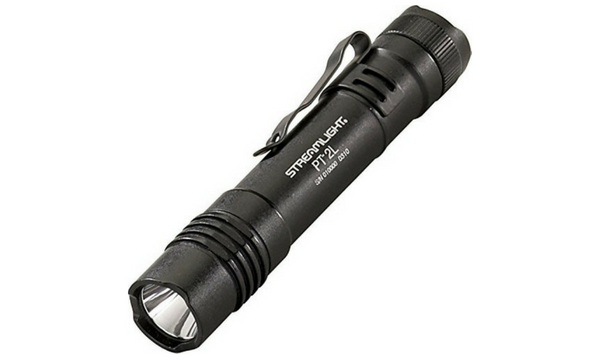
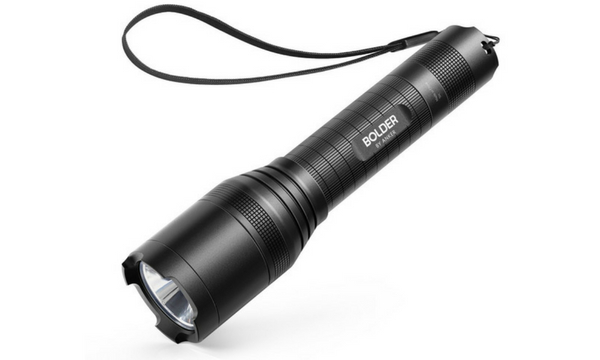
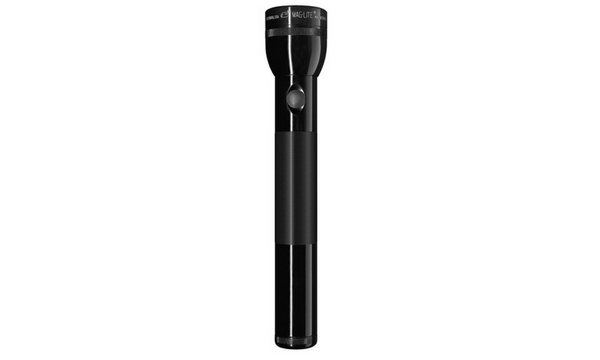
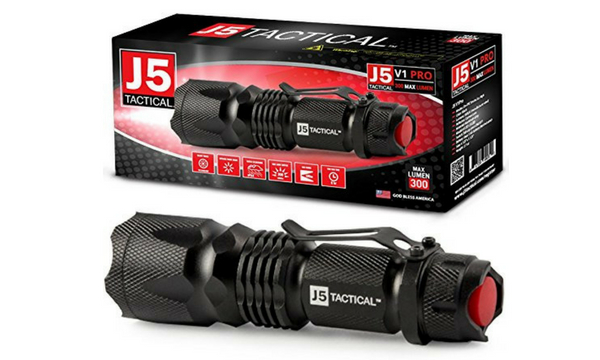
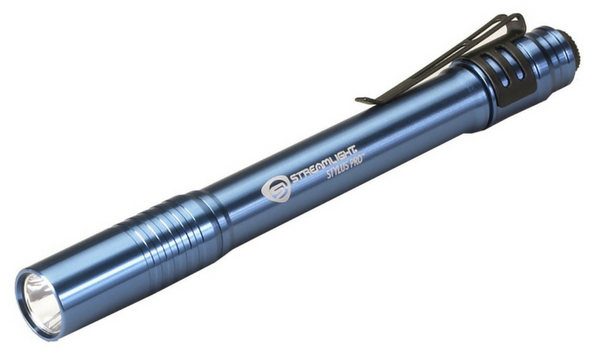
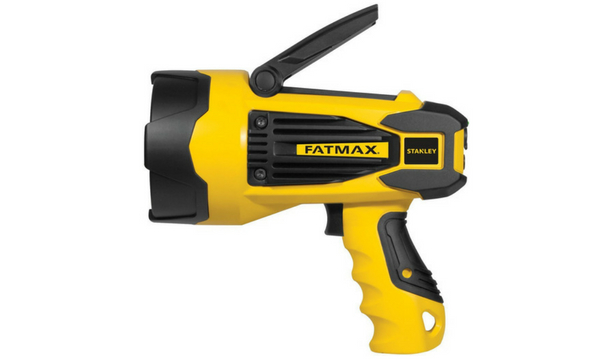
![[Rechargeable] LED Tactical Flashlight](https://www.awebtoknow.com/wp-content/uploads/2019/02/Rechargeable-LED-Tactical-Flashlight.png)
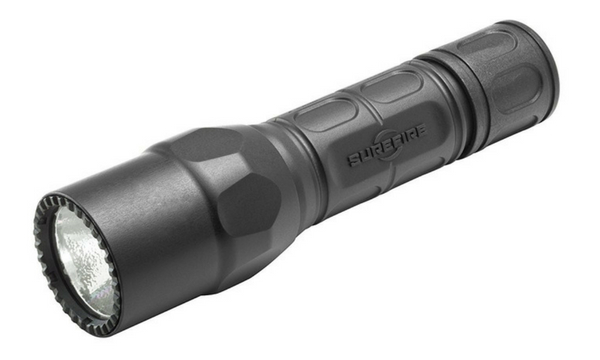
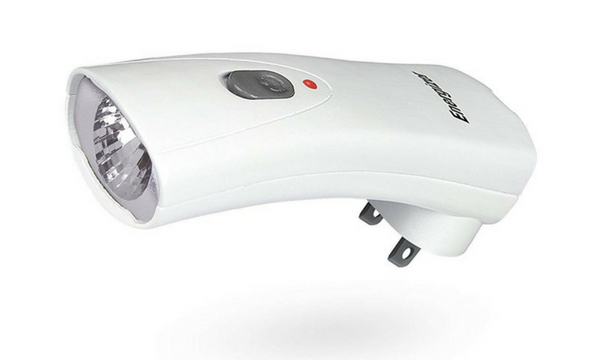
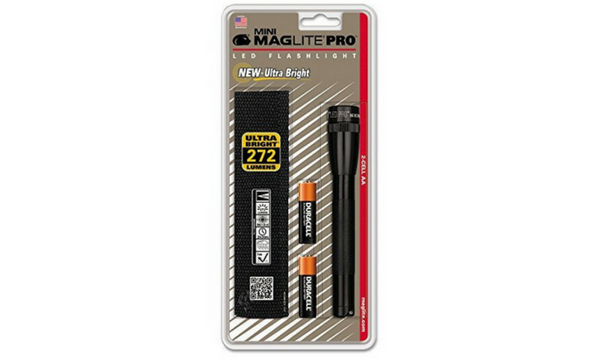
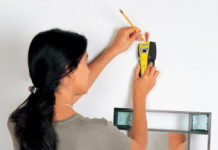


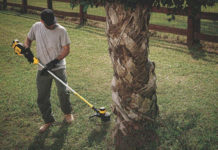
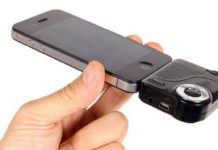






![Best Crochet Hooks for Beginners and Pros [2020 Update] best crochet books](https://www.awebtoknow.com/wp-content/uploads/2018/01/best-crochet-books-100x70.jpg)


